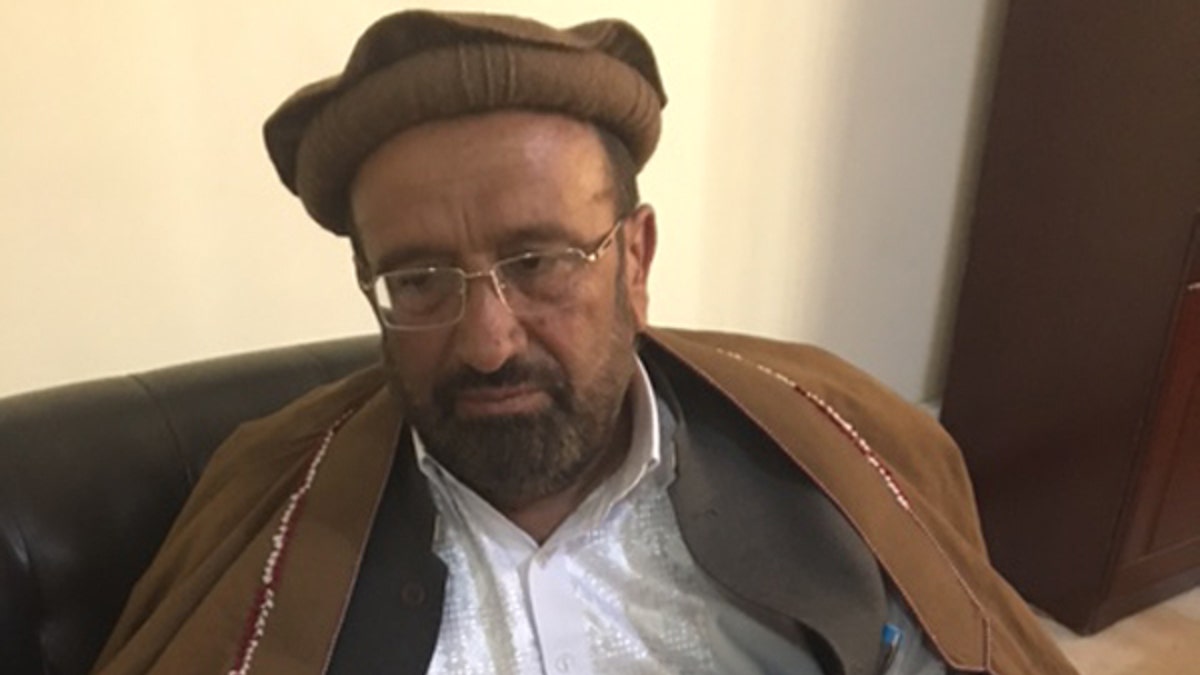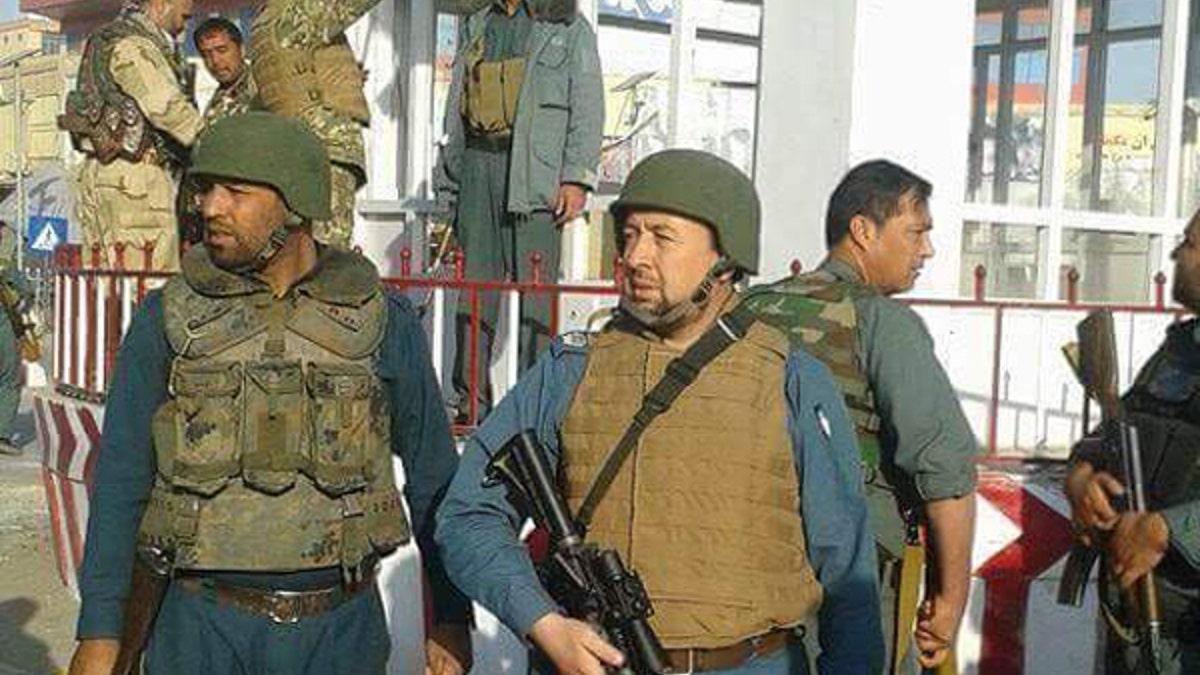KABUL, Afghanistan – Following days of heavy fighting in the northern Afghanistan province of Kunduz last week, the Taliban eventually defeated Afghan security forces, taking the largest of the province’s six districts.
Shortly after the Taliban took the Qala-e-Zal district, which is just west of the city of Kunduz, the Taliban launched a fierce offensive to take Khan Abad, the district on the east side the city, the fifth largest in Afghanistan with an estimated population of just more than 300,000.

Kunduz under fire (Kunduz under fire)
Local commander Jawid Kundozi told Fox News Tuesday morning that six days ago -- fearing the government troops' possible inability to hold the district against the encroaching Islamic fundamentalist insurgents -- he called in several hundred civilian fighters and they established their own front line weaving through villages.

Paiman Pirzadeh, a military analyst and seven-year Kunduz member of Parliament (Paiman Pirzadeh, a military analyst and seven-year Kunduz member of Parliament)
The intense clashing, Kundozi said, hasn't stopped since.
"At any time, we are up against 300 to 600 Taliban," he explained. "The government gives us some ammo, but we are using our own weapons and defending ourselves, our people, our village, our life. We can't rely on anyone else."

Afghan soldiers in Kunduz (Afghan soldiers in Kunduz)
Unlike much of the Taliban war ravaging across Afghanistan, the Kunduz fight is taking place in residential areas -- from farmland to the roofs of houses, with snipers from both sides shooting at each other from as little as 350 feet apart. Kundozi said that in the last few days alone they have lost nine of their men, and have killed around 30 Taliban fighters.
An official in Kunduz city, who requested anonymity as he was not authorized to speak to the media, told Fox News that government troops in this district, located in the center of the province, have so far managed to keep the Taliban out. But their biggest threat is the terrorist group's routine ability to position its fighters on the newly reconstructed Archin Bridge, located around 6 miles from the city, and shoot at cars and people passing by.
US AIDS ISIS, AFGHANISTAN’S FORMER PRESIDENT SAYS
If Afghan forces and their citizen allies lose Kunduz to the Taliban, it won’t be the first time. The Taliban took the city district for brief periods in September 2015 and again a year later in 2016.
With top-notch U.S.-led training and an almost 16-year presence in the country, what is continuing to go wrong in Kunduz?
According to Paiman Pirzadeh, a military analyst and seven-year Kunduz member of Parliament, the "bloody war" began years before the Taliban actually gained ground during the last years of the Karzai administration, which ended in 2014.
Pirzadeh insisted that the Obama administration got an incorrect picture of Kunduz from Karzai and associated Afghan leaders, a picture that falsely suggested that the region was dealing with ethnic rivalries rather than a slowly burgeoning Taliban terrorist threat, and thus it was better for the coalition to focus resources elsewhere as it was something of a minor "internal problem."
But with NATO and Afghan national government attention centered on terrorists teeming in the south and east of Afghanistan, the insurgency in the north had years to become established and dig in.
Afghanistan is united in that it is almost completely Sunni Muslim, but its divisions lie along ethnic rather than religious lines. The country is made up mostly of Pashtun and Tajik ethnic groups, as well as minority Uzbeks and Hazaras and various other smaller groups. Since the U.S.-led invasion, Pashtuns -- which also make up most of the Taliban -- have dominated senior government and leadership positions, leading to increased ethnic tensions and difficult internal military and government coordination.
‘The government gives us some ammo, but we are using our own weapons and defending ourselves, our people, our village, our life. We can't rely on anyone else.’
Pirzadeh said that around 2012 there was a seemingly calculated push for more and more Pashtuns to migrate north to Kunduz from the south of the country, causing even deeper ethnic issues. In Pirzadeh's view, the push to bring more Pashtuns to the region was supported by Karzai to reduce the power of other ethnicities in the area.
Not only was Kunduz neglected, but the Afghan government inadvertently armed Taliban in Kunduz. In 2012 then-President Hamid Karzai and other officials were made aware that weapons, around 1,000 Kalashnikov rifles, were distributed from the government to local police, but many fell into the hands of Taliban-affiliated tribal militias and then into Taliban hands themselves.
"We had a situation where a lot of new people were claiming to be poor farmers who needed to protect themselves, but once they got their weapons they became Taliban," Pirzadeh explained. "This started further out in the villages, and eventually you had nomads moving closer and closer to the city."
Over time, with the influence of migration from the south, more and more locals started supporting Taliban elements, seeing it as a means to protect themselves, several Afghan sources told Fox News. There were various occasions in which Taliban fighters were killed by coalition forces, but local farmers often collected the bodies quickly and paraded them through the streets, proclaiming that innocent civilians had been killed and demanding retribution payments -- which they sometimes received.
Kundozi, the local leader, also acknowledged that for many years the road was being paved for Taliban fighters and supporters to move in unabated. He said that this prompted increased uncertainty among the local populace over who could and could not be trusted, an uncertainty that still permeates the province.
"We now have many locals who are supporting the Taliban. They have been helping them move closer to the city," he said. "Often they have family or tribal connections to the fighters, and they are providing them housing and information on the routes."
Other locals are firmly against the Taliban. Those locals have sometimes heard neighbors who support the Taliban openly discussing the terror group's plans to take over areas weeks before attacks took place. The anti-Taliban locals would then file complaints with local leaders, which often were ignored, sources said.
Mohammad Omar Safi, the former governor of Kunduz, also said that disappointment in the central government -- from ethnic problems to corruption concerns -- over recent years led to growing support for the Taliban.
"Even the butcher shop right in front of the municipality takes its prices from what the Taliban tells it, not the government," he said.
"The situation right now is very dangerous. People are highly concerned about what to do."
Another problem: The ongoing fighting in Kunduz province has ignited a refugee crisis -- with thousands of families over the past few days continuing to flee. There are said to be no stringent vetting mechanisms in place to ensure they are not Taliban families or supporters.
Kunduz city is situated at a key logistical juncture with highways linking Kabul to the south, Sher Khan Bandar to the north and Mazar-e Sharif to the west. For the first decade of U.S. occupation, it remained relatively peaceful compared to most of the country.
Several officials cautioned Fox News that Kunduz, even if Taliban areas are soon retaken by Afghan forces, will inevitably fall to the Taliban again unless local support for terrorists is rooted out and ethnic rivalries are addressed. Furthermore, the government forces themselves are not as strong as they should be, with leaders said to be put in place not based on performance or experience, but on tribal and family connections.
The third fall of Kunduz comes as Pentagon officials are also mulling how to solve the increasing instability in the country, almost 16 years after the U.S. launched Operation Enduring Freedom in the wake of 9/11. It is expected that in the next week, U.S. officials will request President Trump's approval for the deployment of several thousand more U.S. troops to Afghanistan.
Kundozi noted that Afghans themselves need to be the foot soldiers -- ones who are familiar with the area itself. While more U.S.-led air support would be of benefit, ensuring fair representation among ethnic groups and stamping out corruption in military leadership -- putting the most capable in the top jobs rather than those with the right connections -- are fundamental.
"The coalition can deploy more troops," Pirzadeh added. "But we have the numbers and the capability to clean this mess up. The best people aren't on the job today. We must change that."
